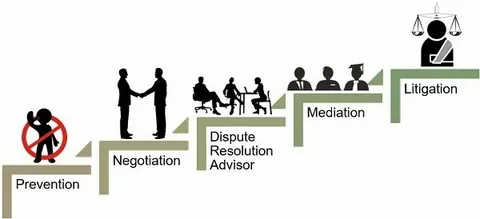Comparing Committee Dispute Resolution to Arbitration and Mediation
Disputes are inevitable in both personal and professional contexts, and resolving them efficiently is crucial for maintaining healthy relationships and business operations. Among various dispute resolution methods, Committee Dispute Resolution, Arbitration, and Mediation are commonly used approaches. Understanding how these methods differ and what benefits each offers can help parties choose the best path for resolving conflicts.
What is Committee Dispute Resolution?
Committee Dispute Resolution involves a group or panel, often formed within an organization or agreed upon by parties, to review and resolve disputes. This committee typically comprises representatives from involved parties or neutral members with expertise relevant to the conflict. The committee discusses the issues, examines evidence, and makes a decision that aims to be fair and balanced.
Arbitration Explained
Arbitration is a more formal process where disputing parties agree to present their case to an impartial arbitrator or a panel of arbitrators. The arbitrator listens to both sides, reviews evidence, and issues a binding decision. Unlike court proceedings, arbitration is usually confidential, quicker, and less expensive.
Mediation: Facilitated Negotiation
Mediation involves a neutral third party—the mediator—who facilitates dialogue between disputing parties to help them reach a mutually acceptable agreement. Unlike arbitration or committee decisions, mediation outcomes are not binding unless the parties voluntarily agree to the terms.
Comparing Committee Dispute Resolution to Arbitration and Mediation
When comparing committee dispute resolution to arbitration and mediation, several distinctions emerge in terms of process, control, and outcome:
Decision-Making Authority
- In committee dispute resolution, decisions often rest with the committee members, who act as decision-makers.
- Arbitration results in a binding decision imposed by the arbitrator(s).
- Mediation empowers the parties to control the outcome by reaching a voluntary agreement.
Formality and Flexibility
- Committee dispute resolution tends to be less formal than arbitration but more structured than mediation.
- Arbitration is typically formal and governed by predefined rules.
- Mediation is informal and highly flexible, focusing on collaboration.
Cost and Time Efficiency
- Committees may reduce costs by using internal resources and can be quicker than formal arbitration.
- Arbitration may involve higher costs due to arbitrator fees but can still be faster than court litigation.
- Mediation is usually the most cost-effective and quickest method, emphasizing early conflict resolution.
Suitability for Different Disputes
- Committee dispute resolution works well when parties have ongoing relationships and want to maintain collaboration.
- Arbitration suits disputes requiring definitive, enforceable outcomes.
- Mediation is ideal for preserving relationships and finding creative, win-win solutions.
Conclusion
Understanding the differences when comparing committee dispute resolution to arbitration and mediation allows parties to select the most appropriate dispute resolution method. While committees offer a balanced, collaborative approach, arbitration provides a binding decision, and mediation fosters cooperative problem-solving. Each method has unique advantages depending on the nature of the dispute and the goals of the parties involved.
Choosing the right dispute resolution strategy can save time, reduce costs, and promote healthier interactions — key benefits in any conflict scenario.


